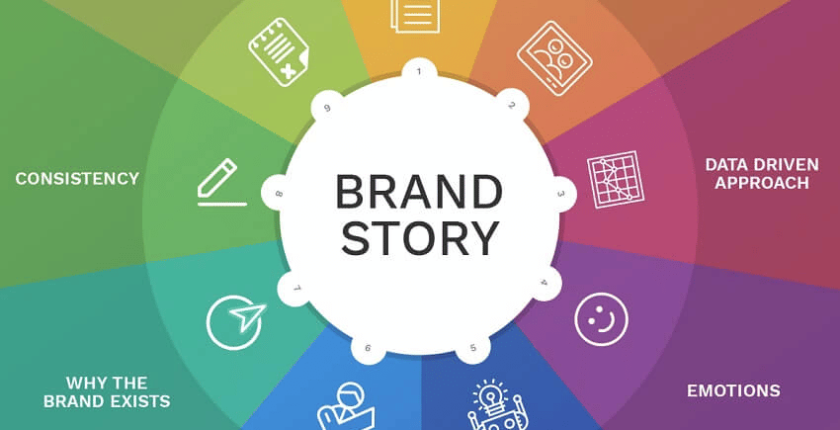The Power of Storytelling in Marketing: Crafting Compelling Brand Narratives
In today’s competitive marketplace, brands are constantly seeking ways to stand out and forge meaningful connections with their audience. One potent weapon in their arsenal is storytelling. Effective storytelling has the ability to captivate audiences, evoke emotions, and leave a lasting impression. In this blog post, we’ll delve into the pivotal role of storytelling in marketing and provide actionable steps to assist you in crafting compelling brand narratives that resonate deeply with your target audience.
Why Storytelling Matters in Marketing
Storytelling is an ancient tradition that has been utilized to convey messages, preserve culture, and foster connections. In the realm of marketing, storytelling serves a similar purpose – it humanizes brands, rendering them relatable and engaging. Here’s why storytelling is indispensable in marketing:
Emotional Connection:
Stories possess the remarkable ability to evoke emotions and forge deeper connections with your audience. When individuals feel emotionally invested in a brand, they are more inclined to become loyal customers. Additionally, emotional storytelling can create a sense of empathy and understanding among your audience.
Memorability:
Stories are inherently more memorable than mere facts and statistics. By interweaving your brand message into a compelling narrative, you heighten the likelihood that your audience will remember and recall it. Moreover, memorable stories can help your brand cut through the noise and stand out in a crowded marketplace.
Points of Differentiation:
In a saturated marketplace, brands must find avenues to set themselves apart. Storytelling enables you to showcase what distinguishes your brand and why it holds significance for your audience. By highlighting your unique selling propositions through storytelling, you can effectively differentiate your brand from competitors.
Engagement:
Stories inherently captivate. They seize attention, sustain interest, and foster interaction. By leveraging storytelling, brands can maintain their audience’s engagement and attention. Furthermore, storytelling can create anticipation and curiosity, driving your audience to actively engage with your brand.
Steps to Crafting Compelling Brand Narratives
1. Know Your Audience:
Gain an in-depth understanding of your audience – their interests, concerns, and what resonates with them. Tailor your brand narrative to address their needs, desires, and pain points. Additionally, understanding your audience’s demographics, psychographics, and behavior can help you craft more targeted and relevant stories.
2. Identify Your Brand’s Core Values:
Define your brand’s fundamental values and beliefs. Your brand narrative should authentically reflect these core values and communicate them effectively. Moreover, aligning your brand narrative with your core values can help establish trust and credibility with your audience.
3. Craft a Compelling Story:
Develop a narrative that captivates your audience from start to finish. Commence with a hook that grabs attention, introduce conflicts or challenges, and resolve them with your brand as the hero. Additionally, structuring your story with a clear beginning, middle, and end can help guide your audience through the narrative journey.
4. Show, Don’t Tell:
Utilize vivid imagery, relatable characters, and descriptive language to bring your story to life. Demonstrate how your brand makes a difference rather than simply informing your audience about it. Furthermore, using storytelling techniques such as sensory details and storytelling devices can help create a more immersive and engaging experience for your audience.
5. Be Authentic:
Authenticity is paramount in building trust with your audience. Be transparent, genuine, and honest in your storytelling. Avoid clichés or exaggerated claims that may be perceived as insincere. Moreover, sharing authentic stories about your brand’s journey, values, and impact can help foster a deeper connection with your audience.
6. Create Consistency Across Channels:
Ensure that your brand narrative remains consistent across all touchpoints – from your website and social media to your advertising and customer service interactions. Consistent messaging and storytelling can help reinforce your brand identity and create a cohesive brand experience for your audience. Additionally, aligning your storytelling efforts with your overall brand strategy and messaging can help amplify your brand’s impact and effectiveness.
7. Measure and Iterate:
Monitor the performance of your brand narrative over time and be prepared to make adjustments based on feedback and results. Continuously refine your storytelling approach to better resonate with your audience. Moreover, leveraging data and analytics to track key metrics such as engagement, brand sentiment, and conversion rates can help you gauge the effectiveness of your storytelling efforts and identify areas for improvement.
Conclusion
In conclusion, storytelling stands as a potent tool in marketing, capable of fostering connections, differentiating brands, and driving success. By adhering to the steps outlined above and crafting compelling brand narratives, you can establish meaningful connections with your audience and attain your marketing objectives. Remember, effective storytelling is not just about conveying information – it’s about creating emotional connections, sparking inspiration, and leaving a lasting impression on your audience.
Visit our blog pages for more

